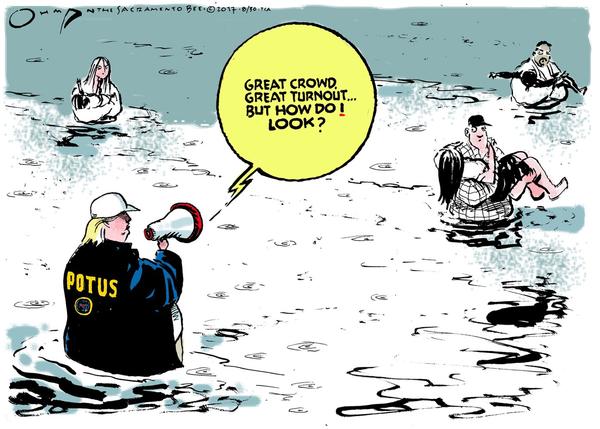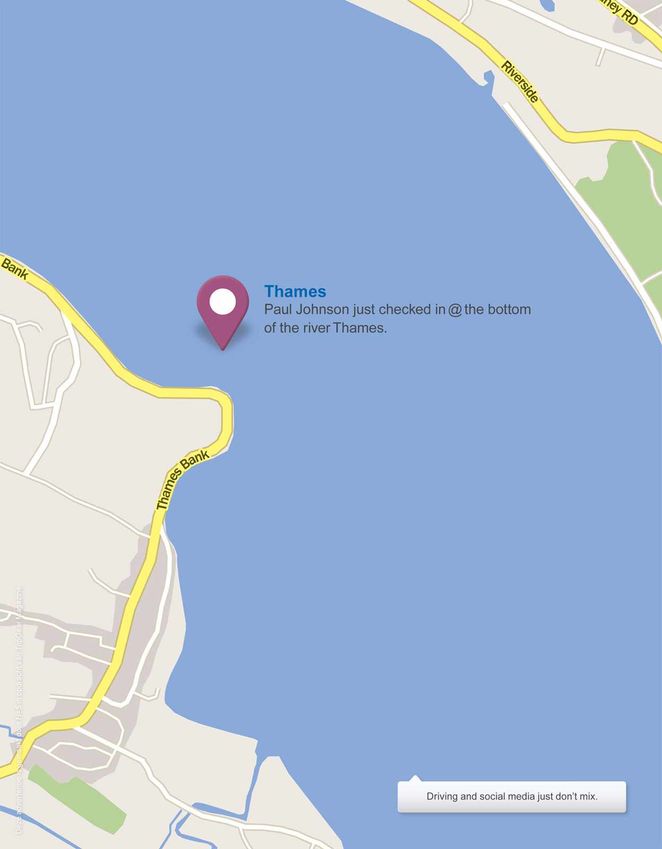Lecture 3:
Audiences and Appeals
Presenting Your Case
When you present your case, you must have a clear idea of your audience. You must also understand the medium you're using. And you must constantly keep in the forefront of your mind your purpose, or your goal, in presenting this case.
Last time, I gave you an outline for a persuasive paper. I know this is an unfamiliar form for many of you. Most people don't go around thinking of every situation as an argument they must win. And many people are uncomfortable with the idea of conflict implicit in the Persuasive process.
But "Argument" or "Persuasion" can also be thought of as "Problem Solving." Most of us have to solve problems on a daily basis. Whether it's in our families, with our kids, at work, or in the neighborhood, problems exist. There may also be conflicts. But those are also problems.
Think of persuasion as a subset of resolving conflicts, and that is a subset of problem solving. "Winning an argument" is a selfish way of thinking of what you're doing--it's about your victory. Resolving a conflict or solving a problem in a way that leaves most people more satisfied or comfortable is an unselfish way of thinking of it: it's about making everyone happier with what is happening.
But finding a solution to a problem isn't the end of the process. It's just the beginning. If you present your solution, you may (in fact, most likely you will) find that people don't agree with your solution. They may not even see the problem the same way you do.
So there are lots of steps to this process. The first is getting everyone to agree that there is a problem. Then, it's getting them to agree on what the problem is. (Those two aren't the same--more on that in a minute.)
Then, since everyone in the world, or your town, or your neighborhood, or even your own family, doesn't think the same way, their ideas about what the correct solution might be will be different from yours. And even if they do agree on the correct solution, they won't agree on the best way to achieve it.
An example
Here's an example from my neighborhood. We have an increasing homeless population. There has been more and more discussion about it on the neighborhood message boards, which has culminated in several neighborhood meetings.
Some people on the message boards and in the meetings regard the homeless themselves as the problem. They don't care why they're homeless; they just want them to disappear.
Others want to help the homeless find homes, and there has been a lot of discussion about finding a way to get the city to allow people to build guest houses or convert garages on their property.
Others feel sorry for the homeless and want to know more about what services are available to help, and how they find them.
At one meeting, one person said we should turn our neighborhood park into a "tent city" for the homeless, with PortaPotties, food service, etc. The response was not pretty. No one else (at least, no one who spoke) liked the idea of giving up our park, and many people were incredulous that he would even consider encouraging homeless people to stay in the neighborhood.
One person pointed out that the church has a very large lawn, and would be the perfect place to put tiny homes where the homeless could live in a cleaner, safer environment. That suggestion was not received well, either.
What became clear was that no one agreed on much of anything. Some people felt the homeless created their own problems, and it was their own fault they were homeless, so it wasn't up to us to help them. Others felt that homelessness is caused by many issues which can be addressed, one of which is the high cost of housing, and wanted to approach the problem from that angle. Still others wanted to help the homeless address their issues, as long as the homeless people weren't in our neighborhood. Some people were angry; some were fearful; some were concerned; some were sympathetic. There was no unanimous agreement on any one solution, because too many different ideas and values and emotions were clashing, and no one was able to untangle them. Almost everyone left the meetings unsatisfied.
Where to Begin?
With any problem or issue, the first thing to do is understand your audience. Who are they? What is their background? How much do they already know? More important, how much do they think they know? How do they feel about this problem, and how strongly do they feel? Are they motivated by their values, their fears, their knowledge?
In a setting like the neighborhood meetings I mentioned, you can watch and listen to people and figure out what makes them tick. But in other situations--if you're making a speech or writing a report or proposal to strangers, for example--you may not be able to do this. In that case, it's best to find out as much as you can about the members of your audience. Ask around or do some research.
Then remember that most people are motivated by both intellect AND emotion. Many people are filled with fear at the thought of any change or difference, and sometimes this fear appears as anger. Others are fearful of their immediate safety or security. (Many of the angry people at the meetings on homelessness, for example, talked about their concern for their children or their worries that their businesses would be affected.)
It's tempting to dismiss people who disagree with you as "stupid" or "obstructive" or some other adjective that allows you not to worry about them. But that doesn't really help you solve any problems. You need to take into account people's fears if you want to get them to listen to your solutions, or take the actions you think are important.
You also need to be aware of people's values and beliefs. Not everyone believes the same things, and not everyone shares the same values. It's tempting to dismiss people who don't believe in the same things you do. But you can't communicate with them effectively if you can't hear their very real concerns and address those fairly.
Here's an example: a student in one of my classes denied the reality of climate change. Her argument was that God created the Earth, and God would never destroy it. God wouldn't do that to His people.
This student didn't see the issue of climate change the same way many of the other students did. In fact, she didn't see an issue at all.
Another student admitted grudgingly that climate change was real, but refused to acknowledge that it was caused by human beings.
A couple of students said climate change isn't real; it's just normal weather patterns, and it's being blown out of proportion by the media, so they have something exciting to raise their rating.
If you are going to argue that climate change exists and we need to take action to mitigate it, you cannot ignore people like these who disagree with you.
Be aware that you may run across a fanatic or two. Fanatics do not change their views, and there's no point in wasting your time with them. Most people, though are reasonable, and if you approach the problem in an effective way, you can get them to see your point of view.
Here are some possible approaches to this particular issue:
- To address the student who believes God wouldn't destroy the Earth, you might try saying that, while God might not destroy the Earth, humans may. Humans have free will, and God allows them to make their choices. They also have to live with the consequences. So if our actions have brought us to the brink of destruction, it's up to us to give more respect to God's creation and make changes that will preserve it. This respects the student's values and beliefs, but also allows her to see the problem in a different way, a way which requires her to take action.
- To address the student who said that climate change is real, but not caused by humans, you might try saying that whether it is caused by humans or not, it's happening, and we need to take action. Oceans are rising; how can we help cities prevent flooding? Fresh water sources are drying up; how can we conserve or mitigate this problem? Etc.
- To address the students who say climate change isn't real, you might use a similar approach. Don't waste your time arguing that climate change is real. Go to the real issue: what can we do to help people who are in trouble? Some lands are drier than they were. How can we help people affected by drought? Can we find long-term solutions in case the drought lasts a long time? Some crops no longer grow in geographic areas where they used to thrive. What can we plant instead that will maintain our food supplies? Etc.
Many people are fearful of the huge impact climate change will have. They can't take it in--it seems overwhelming. Breaking it down into smaller issues that CAN be addressed makes it easier to get people to listen, think, agree, and act.
The same is true of the homelessness issue in my neighborhood. It's too big and complicated, and involves too many emotions, so people stop thinking about it. Breaking it down into smaller issues, such as mental health, hunger, safety, etc., and then from there into even smaller issues, makes it more manageable, and people are less likely to turn away in frustration or feel that their voices aren't being heard.
Logos, Ethos, Pathos
People who talk about classical argument techniques will use three terms: Logos, Pathos, and Ethos.
These are Latin terms for different kinds of appeals and methods of argument.
Logos is the root for the word "logical," and is appealing to someone's reason and logic. You are using logos when you are giving facts.
Here are some examples of appeals to logos from yourdictionary.com:
All of these examples appeal to your logic and reason; they ask you to consider the facts.
Pathos is the appeal to emotion. When you tell a sad story, or use words that evoke specific emotions, you are using pathos.
Here are some examples of appeals to pathos from yourdictionary.com:
- "If we don't move soon, we're all going to die! Can't you see how dangerous it would be to stay?"
- "I'm not just invested in this community - I love every building, every business, every hard-working member of this town."
- "There's no price that can be placed on peace of mind. Our advanced security systems will protect the well-being of your family so that you can sleep soundly at night."
- "Where would we be without this tradition? Ever since our forefathers landed at Plymouth Rock, we've celebrated Thanksgiving without fail, making more than cherished recipes. We've made memories."
- "They've worked against everything we've worked so hard to build, and they don't care who gets hurt in the process. Make no mistake, they're the enemy, and they won't stop until we're all destroyed."
- "Don't be the last person on the block to have their lawn treated - you don't want to be the laughing stock of your community!"
- "You should consider another route. I heard that that street is far more dangerous and ominous at night than during the daytime."
- "You'll make the right decision because you have something that not many people do: you have heart."
- "After years of this type of disrespect from your boss, countless hours wasted, birthdays missed… it's time that you took a stand."
- "Better men than us have fought and died to preserve this great nation. Now is our turn to return the favor. For God and country, gentlemen!"
- "You will never be satisfied in life if you don't seize this opportunity. Do you want to live the rest of your years yearning to know what would have happened if you just jumped when you had the chance?"
All of these appeal to people's emotions, rather than their reason: their fear, their patriotism, their frustration, their love for their families.
Ethos is the appeal to ethics; that is, you want to persuade the audience that you have a good character and are thus credible and trustworthy. This is also sometimes called the "appeal to authority."
Here are some examples of appeals to ethos from yourdictionary.com:
- "As a doctor, I am qualified to tell you that this course of treatment will likely generate the best results."
- My three decades of experience in public service, my tireless commitment to the people of this community, and my willingness to reach across the aisle and cooperate with the opposition, make me the ideal candidate for your mayor."
- "The veterinarian says that an Australian shepherd will be the perfect match for our active lifestyle."
- "If his years as a Marine taught him anything, it's that caution is the best policy in this sort of situation."
- "You know me - I've taught Sunday School at your church for years, babysat your children, and served as a playground director for many summers."
- "Our expertise in roofing contracting is evidenced not only by our 100 years in the business and our staff of qualified technicians, but in the decades of satisfied customers who have come to expect nothing but the best."
- "He is a forensics and ballistics expert for the federal government--if anyone's qualified to determine the murder weapon, it's him."
- "Based on the dozens of archaeological expeditions I've made all over the world, I am confident that those potsherds are Mesopotamian in origin."
- "If my age doesn't convince you that my opinion matters, at least consider that I am your grandfather and I love you dearly."
- "Doctors all over the world recommend this type of treatment."
- "If you're still unsure, please consider that my advanced degree and field work speak for themselves."
All of these examples use a person's character, knowledge, or title to give their argument credibility and help convince people.
When we are trying to convince someone in person, even our appearance can be an example of ethos: a businessman trying to sell a product to an important client wears a suit and tie; a woman trying to sell a house looks her client in the eye and has a firm handshake. Body language conveys confidence--or the lack of it.
Visual Persuasion
Visual persuasion has been around for thousands of years. If you want to force someone to do what you want, you make yourself look as big as possible and make a scary face. If you want to persuade someone more nicely, you smile. If you want to make someone like you romantically, you dress up in clothing you think will attract them.
We are programmed biologically to respond to visual persuasion.
But some kinds of visual persuasion are more sophisticated than others.
Political cartoons like the following, printed on August 30, 2017 in the Sacramento Bee, in the wake of Hurricane Harvey, can make people laugh, but they also express a point of view and make an argument:

Some photographs make people think about social and economic conditions; they enable us to see a truth we have not seen before. This famous photo by Dorothea Lange of Dust Bowl refugees became iconic; it captured the loss and suffering of the Depression:

Other photos have helped change people's minds about political situations. This photo, of a little girl covered in burns and running in terror from an American napalm attack, turned many people against the Vietnam War:

Here is a print ad: think about how ethos, pathos, and logos work in this ad:

Here is another. What are the appeals here?

Here's another print ad. What are the appeals here?

And here's a commercial. What are the appeals here?
Here's a link to the YouTube video directly, in case you can't see the video on this page or you need captions: Subaru Commercial
This just barely scratches the surface of how visual persuasion can work. As with all of the topics we will cover, there is much more to learn. But at least now you have a place to start.
